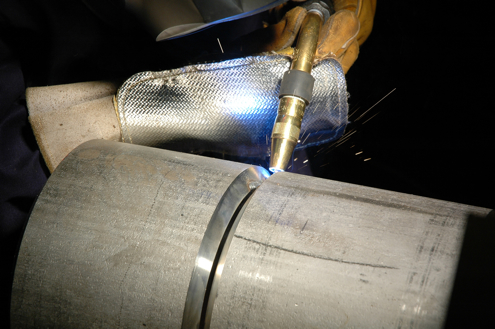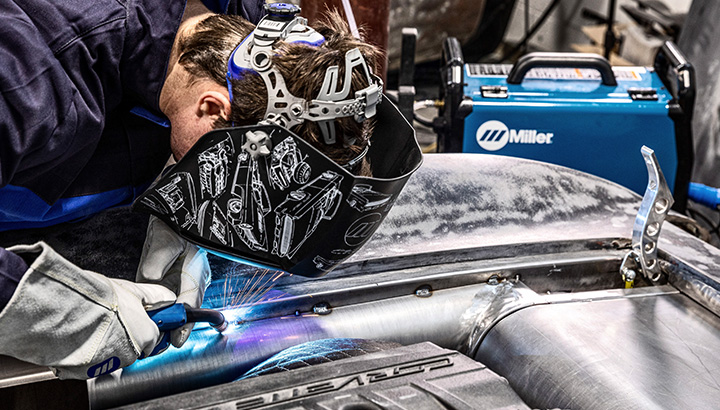Top-rated weld defect solutions from Montana Mobile Welding and Repair Belgrade Welding
Wiki Article
Everything about Welding: Key Insights Into Techniques and Best Practices for Success
Welding includes a variety of strategies, each suited for certain products and applications. Understanding these methods, such as GMAW, SMAW, and TIG, is necessary for attaining suitable results. The appropriate equipment and security methods can not be neglected. As preparation and troubleshooting play crucial functions in the welding process, grasping these aspects can considerably boost the top quality of the end product. What are the key elements that ensure a successful weld?Recognizing Various Welding Methods
Welding techniques include a variety of techniques, each suited to particular applications and products. Amongst the most usual methods are Gas Metal Arc Welding (GMAW), Shielded Steel Arc Welding (SMAW), and Tungsten Inert Gas Welding (TIG) GMAW, also called MIG welding, is preferred for its speed and versatility, making it excellent for thin materials. SMAW, or stick welding, is preferred for its simpleness and efficiency in exterior atmospheres, especially with thicker steels. TIG welding supplies accuracy and control, making it ideal for complex job and non-ferrous steels (Montana Mobile Welding and Repair Fabrication). Each strategy has its distinct advantages and considerations, permitting welders to pick the very best approach based upon the task's demands, product type, and wanted end results. Understanding these strategies is crucial for effective weldingImportant Welding Devices and Tools
While various welding techniques need details abilities, the ideal devices and devices are similarly vital for attaining high quality outcomes. Essential welding devices includes welding devices, which vary relying on the method-- such as MIG, TIG, or stick welding. Protective gear, consisting of aprons, handwear covers, and safety helmets, assurances safety and security and comfort throughout the procedure. Additionally, clamps and components aid safeguard materials in location, making sure precision in welds. Consumables like welding rods, cord, and protecting gas are also crucial parts that affect the top quality of the weld. Tools such as cutters and grinders facilitate surface prep work and post-weld finishing, adding to an expert result. Spending in high-grade equipment ultimately improves the performance and performance of welding jobs.Safety And Security Practices in Welding
Correct safety and security methods are essential in the welding market to shield workers from prospective hazards. Welders need to wear suitable personal safety equipment (PPE), consisting of safety helmets with correct shading, handwear covers, and flame-resistant apparel. Ample air flow is important to reduce exposure to dangerous fumes and gases created throughout the welding process. In addition, workers ought to be trained in the proper handling of welding devices to protect against mishaps. Fire security actions, such as keeping flammable materials away from the welding area and having fire extinguishers readily offered, are required. Regular evaluations of tools and work spaces can aid determine prospective risks before they bring about mishaps. By adhering to these security techniques, welders can develop a much safer working atmosphere and minimize threats related to their profession.Preparing Materials for Welding
Preparing products for welding is an essential action that substantially affects the quality and stability of the last product (Belgrade Welding). Appropriate prep work entails cleansing the surfaces to remove contaminants such as dirt, oil, and corrosion, which can compromise the weld. Strategies such as grinding, sanding, or making use of solvents are typically utilized to achieve a tidy surface area. In addition, making certain that the materials fit with each other well is essential; gaps can result in weak welds. It's likewise essential to think about the placement and positioning of the components, as this will certainly impact the simplicity of welding and the last end result. Ultimately, selecting the ideal filler material and making certain compatibility with the base steels is crucial for attaining strong, durable weldsTips for Achieving High-Quality Welds
Attaining premium welds needs interest to detail and adherence to best techniques throughout the welding procedure. Proper joint prep work is crucial, ensuring surfaces are clean and complimentary from impurities. Choosing the appropriate filler product and welding technique based on the base steels is essential for excellent bonding. Preserving regular traveling rate and angle while welding can advertise and avoid problems harmony. In addition, managing warm input is essential; extreme warmth can lead to bending and compromised joints. If required, frequently checking the welds throughout the procedure permits for instant changes. Finally, using suitable post-weld therapies, such as cleaning and anxiety alleviation, can enhance the sturdiness and stability of the weld, eventually making sure a successful end result.Troubleshooting Common Welding Issues
Welding often provides obstacles that can influence the top quality and stability of the end product. Usual concerns welding hoods such as porosity, inconsistent weld grains, and getting too hot can occur, each requiring specific troubleshooting methods. Recognizing these troubles is necessary for welders to boost their abilities and attain suitable results.Porosity Problems Discussed
Although porosity can often be forgotten, it remains a crucial problem in welding that can compromise the stability of an ended up product. Porosity refers to the presence of tiny gas pockets within the weld grain, which can lead and weaken the joint to premature failing. This issue normally arises from impurities, moisture, or inappropriate securing gas coverage during the welding process. To mitigate porosity, welders need to confirm that the base products are completely dry and clean, utilize proper protecting gases, and preserve regular welding specifications. On a regular basis inspecting the equipment and setting can likewise help determine possible problems before they show up in the weld. Dealing with porosity successfully is vital for accomplishing strong, long lasting welds that fulfill top quality criteria.
Irregular Weld Beads
Inconsistent weld grains can significantly affect the high quality and toughness of an ended up item. Numerous aspects add to this problem, including improper travel rate, inaccurate amperage settings, and inconsistent electrode angles. When the welder relocates also promptly, a grain might appear slim and do not have penetration, while moving as well slowly can cause too much buildup. Additionally, using the wrong amperage can result in either undercutting or extreme spatter, both of which concession weld stability. The welder's strategy, such as irregular torch activity, can additionally bring about unequal bead look. To reduce these troubles, welders ought to concentrate on keeping steady, regulated movements and making sure correct tools settings to attain uniformity in their welds. Uniformity is essential to attaining strong and dependable welds.Overheating and Warping Issues
Extreme warm throughout the welding process can result in significant getting too hot and contorting concerns, impacting the architectural integrity of the work surface. These issues often manifest as distortion, which can compromise placement and fit-up, making further assembly challenging. Aspects adding to overheating consist of the option of welding criteria, such as voltage and travel rate, in addition to the sort of material being welded. To minimize these issues, welders should preserve constant travel rate and ideal heat input while keeping an eye on the work surface temperature. In addition, preheating or post-weld heat therapy can aid reduce stress and anxieties brought on by fast cooling - Belgrade Welding. Normal assessment and adherence to ideal methods are essential in stopping getting too hot and making certain the long life and reliability of bonded frameworksFrequently Asked Inquiries
What Are the Career Opportunities in the Welding Industry?
The welding market provides diverse career opportunities, including settings as welders, teachers, inspectors, and engineers. Professionals can operate in production, building and construction, aerospace, and automobile industries, gaining from strong need and competitive salaries in different roles.Just How Can I Improve My Welding Rate Without Compromising Top Quality?
To boost welding rate without compromising top quality, one need to practice effective strategies, keep devices, enhance setups, and improve hand-eye sychronisation. Regular training and looking for responses can also substantially add to achieving much faster, high-grade welds.What Qualifications Are Available for Welders?
Countless accreditations exist for welders, consisting of those from the American Welding Culture (AWS), the National Center for Building Education And Learning and Study (NCCER), and numerous industry-specific companies. These qualifications improve employability and show ability efficiency.Just How Does Welding Affect the Properties of Metals?
Welding affects the properties of metals by modifying their microstructure, which can cause modifications in ductility, solidity, and stamina. Heat input and cooling prices during the procedure considerably impact these material attributes.Can I Bonded Dissimilar Metals With Each Other?

Report this wiki page